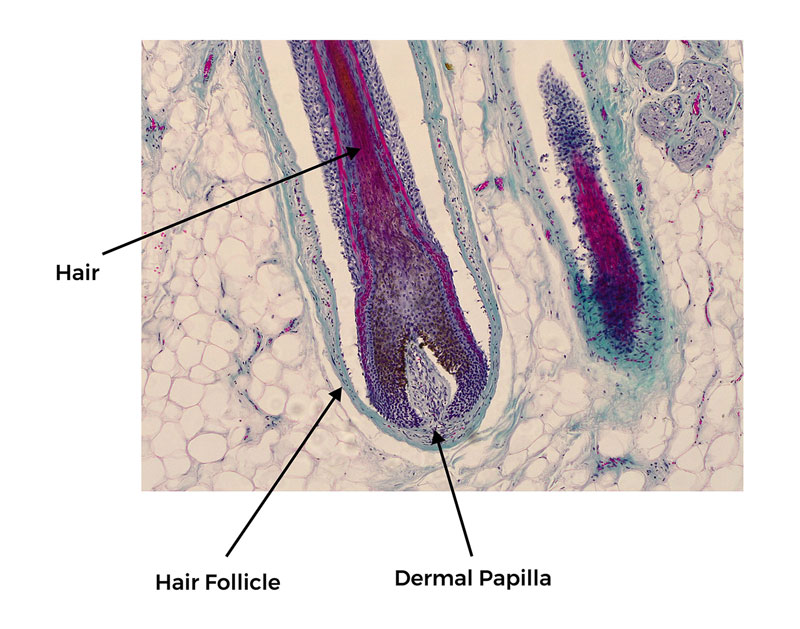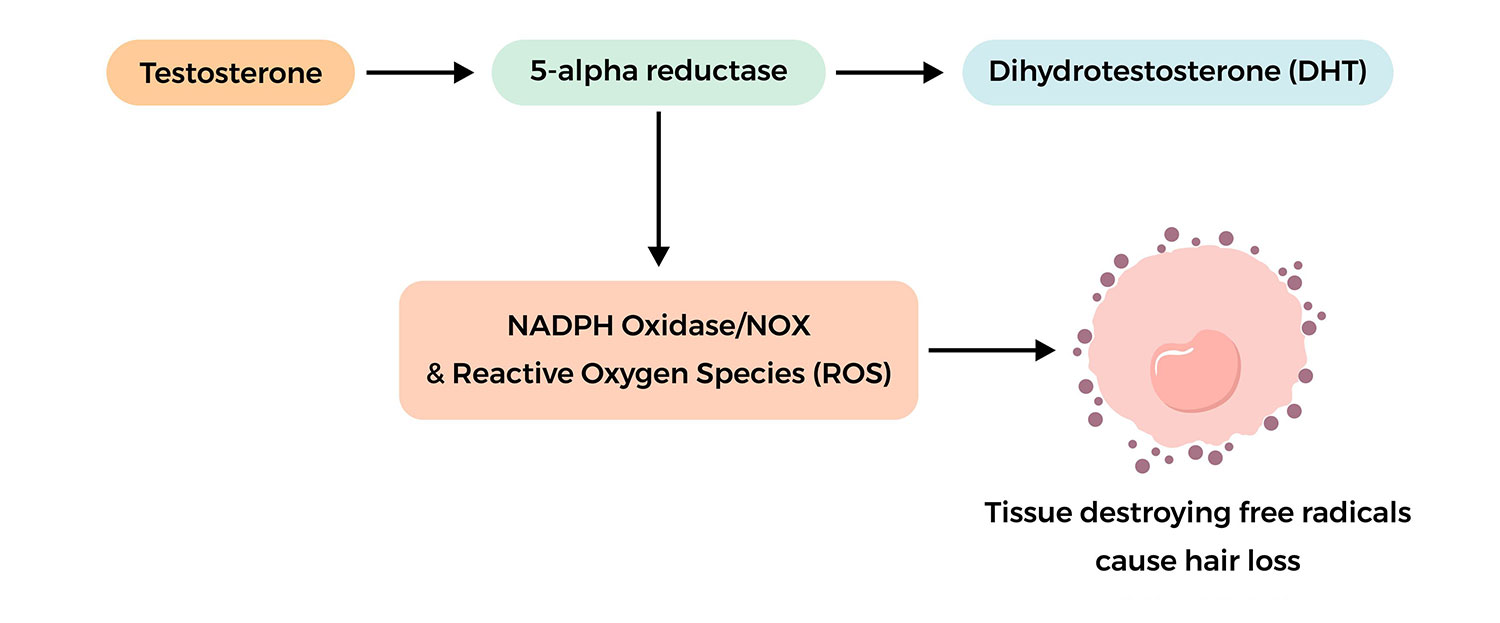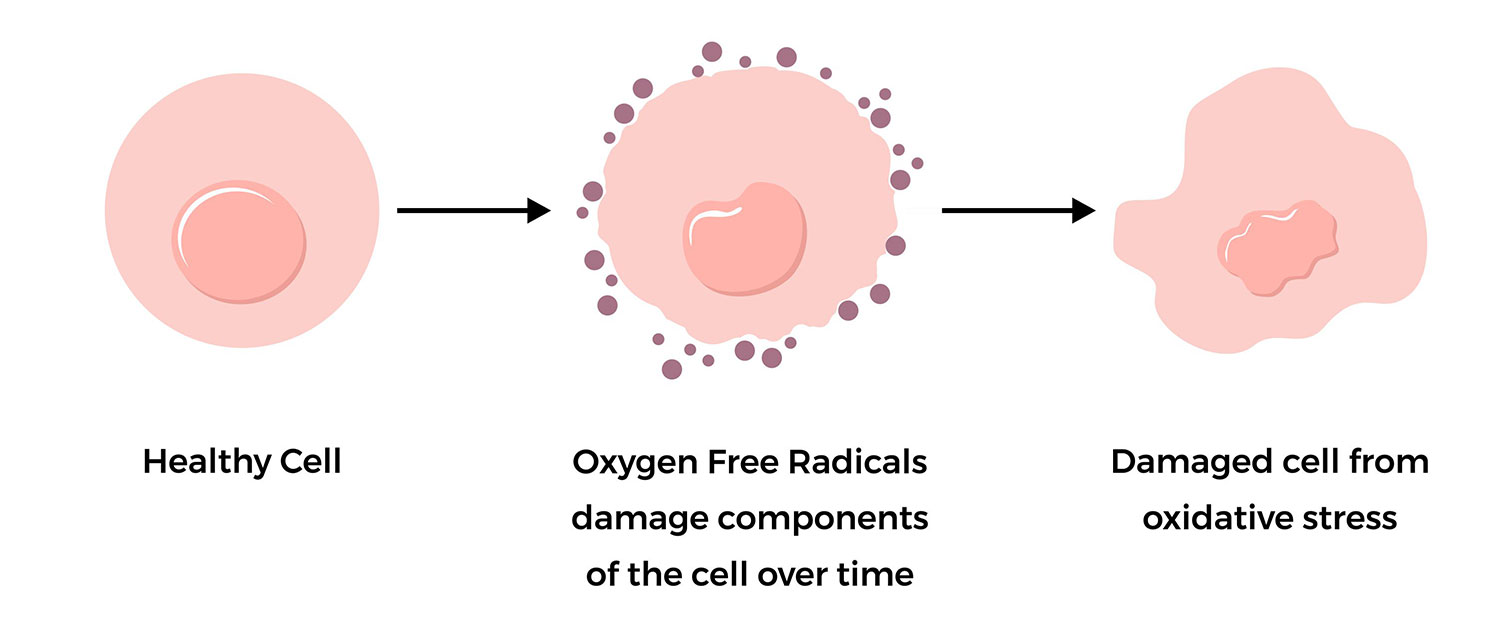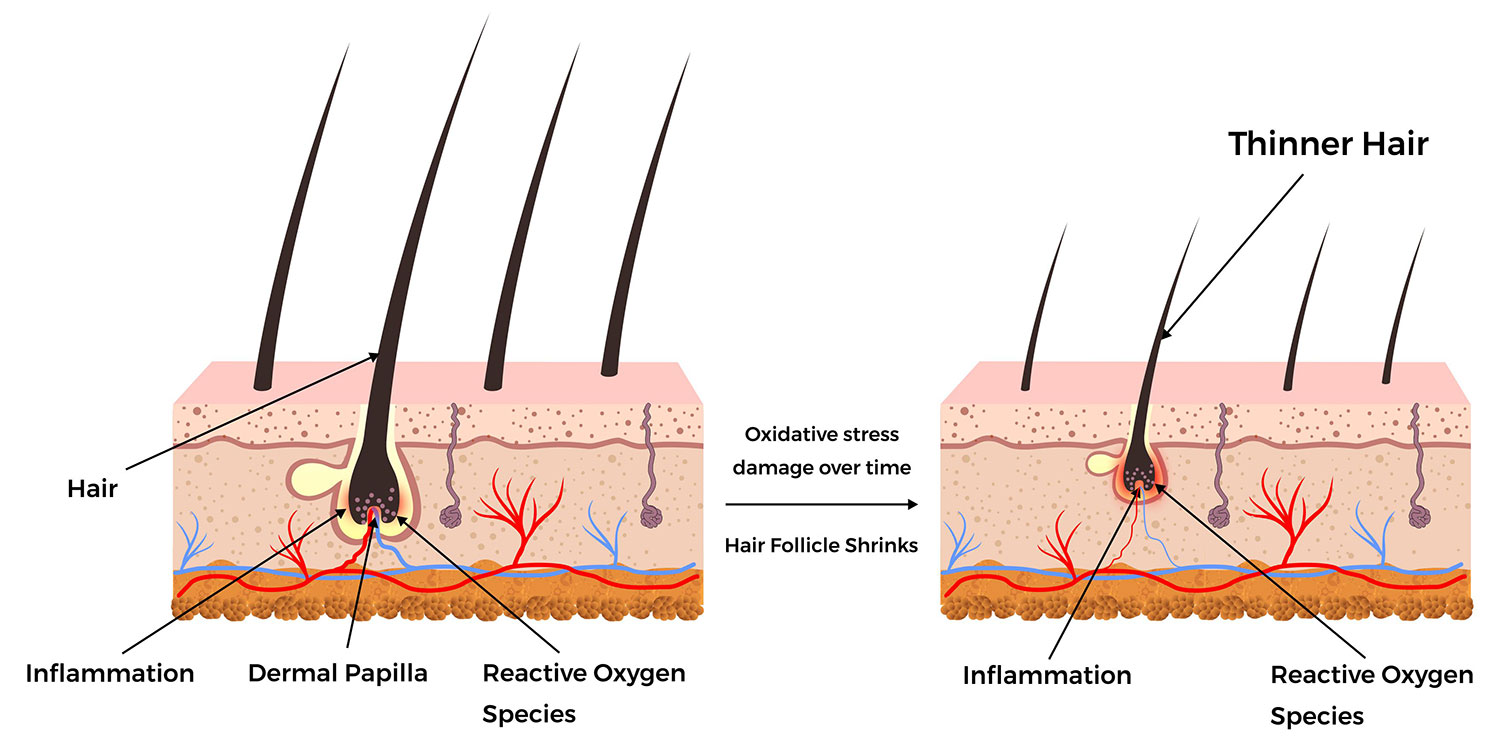The Common Cause of Hair Loss
What we ‘knew’ about hair loss vs. what we know now
We all have the male hormone, testosterone, in our bodies. Yes, women do too, but at much lower levels than men. The testosterone in the hair follicles on the scalp usually has minimal effect, good or bad, on the follicles and hair.
But in those who have inherited a particular enzyme called 5-alpha Reductase located in the hair follicles, some testosterone undergoes a chemical reaction that converts testosterone into a more potent hormone called dihydrotestosterone (DHT).
Until recently, it was thought that DHT was the cause of common hair loss and balding. However, new research has shown there is a different mechanism at play.
A Hair Follicle & the Dermal Papilla
The chemical reaction that converts testosterone into DHT, by the influence of 5-alpha Reductase, causes a powerful oxidising enzyme, NADPH Oxidase (NOX), to be released onto the dermal papilla at the root of the hair where new hair cell production occurs.
5-alpha Reductase causes Oxidative Stress
NOX produces highly destructive free-radical oxygen atoms (ROS) that destroy fast-growing hair cells and prevent the hair from growing as it should. Over time, the hairs that do grow are finer and shorter than they would otherwise be. Until they reach a stage when the hair may stop growing altogether.
In simple terms, oxidative stress’s destructive nature causes most hair loss and not the hormone DHT. But what exactly is oxidative stress?
We are all aware of the damage that free radicals and oxidative stress caused by UV radiation, chemicals, pollutants, and many other things do to the skin, including premature aging, wrinkles, discolouring, and even skin cancer. But we were not, until now, aware that the same destructive type of free-radical oxygen atoms destroy tissues in the hair follicles and prevent the hair from growing.
Oxidative stress triggers a chain of events that can have detrimental effects on hair health:
Miniaturization of Hair Follicles:
Over time, repeated exposure to oxidative stress can lead to a process called miniaturization. This process causes hair follicles to shrink in size, resulting in shorter, thinner, and weaker hair strands. The growth cycle of affected hair becomes progressively shorter, leading to finer hair that eventually stops growing altogether.
Increased Sensitivity:
Hair follicles in some scalp regions are more sensitive to DHT and oxidative stress. These sensitive follicles are typically located in the scalp’s front, top, and crown areas. As a result, hair loss tends to be more prominent in these regions, creating the classic pattern of androgenic alopecia.
Shortened Growth Phase:
Hair follicles undergo a growth cycle that consists of anagen (growth phase), catagen (transition phase), and telogen (resting phase). Oxidative stress can accelerate the transition of hair from the growth phase to the resting phase. This results in shorter hair growth cycles and reduced hair density.
Inhibition of New Hair Growth:
Oxidative stress can also inhibit the growth of new, healthy hair follicles. It can disrupt the formation of new hair cells and prevent their proper development. This inhibition contributes to the overall thinning of hair and the appearance of baldness.




